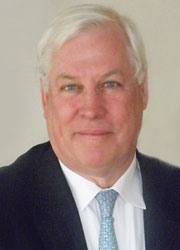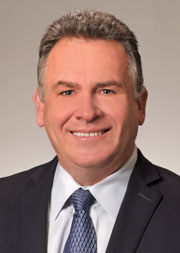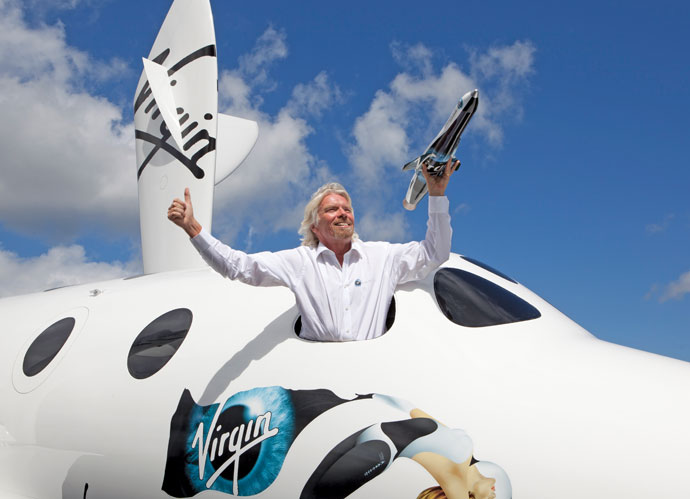By special arrangement with Site Selection, Von Hatley, managing director of Jones Walker Consulting, an affiliate of the prominent law firm that assists clients considering expansion, relocation or consolidation of business operations, recently sat down to interview longtime colleague Jerry Lundquist, the former head of the Global Aerospace and Defense practice at McKinsey & Co. who now serves that firm as director emeritus, in addition to serving on the board of Align Aerospace and heading his own consulting firm.
Both men bring decades of pedigree in global industry, economic development and government policy to the table. Hatley’s resume includes serving as a director at Louisiana Economic Development under three separate governors, and posts as a university educator and a vice president of global operations. Lundquist has spent nearly 30 years providing strategic advice and counsel to CEOs, their boards of directors, and senior management on topics including organization and governance, business strategy, domestic and international cross-border M&A, operational improvement, cost base reduction, engineering optimization and, most recently, alternative energy and green business opportunities.
Von Hatley: There’s been a large increase in demand for commercial aircraft the past several years, with backlogs now extending out over five years. What are the underlying dynamics?
Jerry Lundquist: There are several factors that have come together to produce this rather unprecedented growth in backlog. First, air travel is fundamentally a growth industry. In almost every year, revenue passenger miles grow, usually by 4 percent to 5 percent. Although recessions and other events such as epidemics and wars will perturb the growth rate, in essence air travel continues to increase, reflecting the growth in the world economy.
Second, the growth has shifted — away from the traditional large economies such as the US and Europe which are mainly buying aircraft for replacement, to emerging countries such as China, India and Indonesia whose economies are growing at a far higher rate, and need aircraft to support the explosive increase in commercial activity.
Third, there has been a unique convergence of relatively high oil prices and low interest rates. This makes the fuel saving advantages of new aircraft and engines more compelling, and creates a rush to re-equip fleets while capital is cheap in order to stay competitive.
All of these factors explain both the growth in the backlog, but also the dampening of the typical build cycle from peaks and valleys to a long term steady growth in production rates. Few industries possess this kind of dynamic. With wait times for delivery reaching six plus years, the capacity growth required in the industry is exceptional.
VH: We’ve seen two major announcements for new facilities in the US recently, with the 787 in Charleston, including a new $1.1-billion expansion, and now the vertical phase of construction of the A320 FAL in Mobile. Do you see this as a fundamental geographical shift in US manufacturing, or simply organic expansion into new areas to manage demand?
JL: In the short term it will have only a modest effect, but in the longer term I believe it will turn out to be a fundamental shift. The current footprint of the industry is anchored around Seattle, southern California and Texas with engine production in Cincinnati and Hartford. In Europe, it is Toulouse, France, and Hamburg, Germany, and distributed locations in the UK.

“With wait times for delivery reaching six plus years, the capacity growth required in the industry is exceptional.”
— Jerry Lundquist, director emeritus, McKinsey & Co.
In 20 years, those locations will still be important, but Charleston and Mobile will probably rival them. Not only will incumbent suppliers collocate for logistical reasons, but each of these “mother ships” will spawn new companies and suppliers — from engineering design firms to mechanical job shops and logistics providers. And like Silicon Valley or Boston, talent will aggregate in these areas to serve the industry. Already, states such as South Carolina have an extensive technical training program to handle the anticipated influx of new workers.
VH: One of the differences between aviation and automotive is the timing of relocation of the supply chain to meet new facility demand. Which types of suppliers do you see making location decisions that need to be within close proximity to the new aviation plants, which types can be within a 500-mile radius, and which ones may never need to move?
JL: Initially, very few actually need to move. The aerospace industry has always been a globally distributed industry with components coming from all over the country as well as from Asia, Western and Eastern Europe and the Middle East. Some components, such as interiors, seats and paint will benefit from location next to completion centers, but for everything else, it is at first a question of logistics cost versus proximity.
However, many suppliers are looking not to move entire operations out of their legacy locations, but to supplement their operations by locating close to one of the hubs. For example, a major aerostructures sub has already created a greenfield facility within five miles of Boeing’s Charleston operation, and will not only service future Boeing demand, but also that of business jets and other aerospace segments.
VH: What location decision-making lessons can be learned from the difficulties Boeing experienced with its 787 supply chain strategy?
JL: The 787 is a complex story due to its incredible success as a program meeting a market need, but also because of its highly publicized difficulties, including program delays and early flight issues such as battery fires.

Von Hatley. managing director, Jones Walker Consulting
The decision to launch, and more importantly, to distribute much greater “systems” responsibility to its suppliers, was made well before the Charleston location decision. Many of the suppliers struggled with their new, more inclusive responsibilities, and at the same time, with the radical change in technology of the aircraft, including composites and enhanced power systems. Ironically, the difficulties faced by one of the suppliers [Vought and Alenia’s Global Aeronautica JV] resulted in Boeing’s purchase of their Charleston facility, and the eventual decision to locate a second final assembly line there.
You and I were in Charleston in April, when they announced a further expansion of jobs in that facility. This is part of the ongoing momentum, but the ultimate expansion and maturation of these moves can take as long as 10 years to play out. It is not like the automotive industry, where suppliers need to be close by on day one of a new production location.
VH: Do you think the impact of territorial incentives and underlying tax structures is keenly understood at the board level of aerospace companies? Which incentives or opportunities are most frequently overlooked or misunderstood?
JL: I think it is likely best understood by US-based companies that undertake a good amount of expansions in general, or have footprints in multiple states. But for the most part, across the industry, I would say the answer is no. And even for those companies that have a strong knowledge base, they may not understand how much “money is on the table” because of the intense interest from state and local government to attract the high wages and talent that go with the aerospace industry. This is a very dynamic field, with increasing offers being made by state and local governments to entice relocation into their regions, and similarly counter-offers from the regions that wish to retain their operations and employment.
As boards and management look to maximize shareholder value, they normally look at their traditional areas of supply chain optimization or adding value in the item manufactured. Negotiation of incentives, for the most part, is exogenous to those processes, and can represent a “move the needle” factor in program decisions. There are very few aerospace executives that I meet who aren’t amazed at the extent of financial incentives that are available to support moves that they are contemplating. It really is a little-known factor that needs to be more widely publicized, as it can dramatically change the economic model.
State and local governments recognize the long-term multiplier that aerospace employment means in their domain. As a result, there is a broad spectrum of incentives — for job creation, training and support for site development, and when possible, assistance with purchase of buildings, machinery and equipment, and/or relative tax abatements associated with these decisions.
“There are very few aerospace executives that I meet who aren’t amazed at the extent of financial incentives that are available to support moves that they are contemplating.”
— Jerry Lundquist, director emeritus, McKinsey & Co.
In addition, I would say that there is an even better opportunity with international suppliers, since, in many countries, incentives are non-existent. Those boards have likely not even considered incentive negotiations on an international level, nor understand the intricacies of many state and local governments in the US.
VH: There are many regions aiming to be an area of choice for the unmanned aerial vehicles sector. How much opportunity does this sector truly represent? And to what extent is the sector growing abroad, as well as here in the US?
JL: Unmanned systems are a truly disruptive technology, and over the long term, will redefine our notions of current aircraft for defense and some civil missions. Adoption into civil airspace will appropriately be very measured, due to the myriad safety concerns. And as a total industry, including the defense applications, their size in terms of jobs or revenue is much smaller than one civil aircraft program. So for quite a while, they will not be a serious job creator relative to the manned segments of the industry, but their impact on mission performance is huge.
The unmanned segment is already global. Because of the size of the US Defense budget, and the application of these platforms in conflict areas such as Iraq, Afghanistan and other countries, the US share of the pie is still the largest. But as greater civil and commercial missions are sanctioned by regulations, the overall market will grow in both the US and rest of world.
VH: Do you see airport- or aerotropolis-driven strategies and military base redevelopment opening up opportunities for aerospace firms?
JL: Absolutely, one can see several instances of that now. An announcement as recently as this summer that comes to mind is the AAR MRO announcement at the Chennault facility in Lake Charles, Louisiana, site of a former base.

Richard Branson, Virgin Worldwide
Photo by Mark Chivers
Another interesting opportunity is the eventual use of the Brookley by the Bay facility located literally adjacent to the runway where the new Airbus facility will be built in Mobile. That location today has roughly 300 acres that can be developed, with existing buildings in place. One only has to look at the development of the Airbus facility in Hamburg to note that it is only a matter of time before an astute early adopter finds a way to utilize such prime real estate.
VH: Site Selection’s new plant and expansion records since Jan. 2011 show a substantial number of projects going to Texas, Oklahoma, Florida, Alabama and Georgia, with healthy numbers of projects also still going to Ohio, Minnesota and even California. To what extent is legacy union membership a location issue or non-issue today versus five to 10 years ago?
JL: Unions are not the issue per se. The migration of new plants and expansions is driven by a host of issues that can be summed up as lower cost of doing business, or a more business-friendly environment. Factors such as lower cost of living, more flexible work rules, skill of work force, and regulatory environment all contribute to the final siting decision. These are enhanced or offset by the incentives discussed earlier. There is no question that unionization was an important factor in the move of automotive assembly to Southeastern US states over the last two decades, but given the higher technology and precision aspect of aerospace, other factors play an important role.
VH: Site Selection’s records also show continuing strong investment in both Canada and Mexico. What are your observations about both the mature (Montréal) and emerging aerospace locations in these countries?
JL: There are two very different trends here. Mexico continues to be a valuable location for highly manual intensive/low-tech components such as wiring harnesses or electronic assembly. Many aerospace companies operate maquiladora operations close by the southern border.
Canada boasts several leading aerospace companies such as Bombardier and Pratt & Whitney Canada, which are benefiting from the backlog and growth of the industry, and are attracting new expansion with the support that the Canadian government provides for this leading industry.
VH: Which international markets do you see as ripe for aerospace investment within the next decade? Why? Is China high on the list?
JL: Investment in foreign markets is driven by two factors: total cost and market access. In the case of China, the importance of market access is such that all major aerospace companies have located there to be partnered with the Chinese aerospace industry as it moves forward. Not all of these ventures have been successful, and on a total landed cost basis, it may actually have been cheaper to ship the component from its original point of manufacture. But the importance of China as a market and eventually as a primary OEM cannot be ignored.
“It’s one thing to learn about a project once a company has announced the need to look; it’s quite another thing to learn about a project well into the early planning cycle, which could be three to five years out.”
— Jerry Lundquist, director emeritus, McKinsey & Co.
Indonesia continues to be an important emerging country that has a long history of aerospace development, and a recent history of large and growing airlines that are among the largest customers of commercial transport aircraft. Eastern European nations such as the Czech Republic and Poland have a robust footprint of aerospace manufacturing, leveraging their technically skilled work forces. Morocco is emerging as a strong low-cost source of manufacturing and assembly for European aerospace companies.
VH: In your experience, which other industrial sectors’ skills have proved to be most transferable to the aerospace arena?
JL: At the highest level, there are always transferable skills in the transportation equipment manufacturing sector, but given the advanced nature of aerospace technology, segments such as medical equipment, with its precise machining and tolerances, are becoming “sister” industries. Certainly advanced materials with utilization of ceramics, composites and advanced metallic alloys are very important, as are new manufacturing technologies such as friction stir welding and additive manufacturing. Finally, avionics and software are major elements of improvements in the operation and efficiency of new aircraft.
VH: Do you think that states and localities do enough to understand their relative position to other locations, both in the U.S. and overseas? What advice do you give economic developers wishing to capitalize on aviation/aerospace opportunities?
JL: Probably not, as states and localities are hard pressed with budgetary issues. Likely a lot of what economic developers learn is from industry indigenous to their area, attendance at shows and Internet research. In order to really understand how the industry is performing, one has to understand the strategic process of the companies in it, almost down to the sector level.
It’s one thing to learn about a project once a company has announced the need to look; it’s quite another thing to learn about a project well into the early planning cycle, which could be three to five years out. By knowing this, the economic developer has a much better ability to build relationships and gain insights earlier on in the process. If one has to wait to hear from a site selector that there is a new project, they must remember that they now have been simply put into the race with what are likely 20 competitors or more.
The advice I would give economic development organizations is to utilize the knowledge gained by aerospace strategy firms, and/or firms that have multiple offices in multiple states that are dealing with board-level issues, such as the legal, accounting and engineering firms. This isn’t to say that it’s not a bad idea to attend global aerospace shows, as we always call it the “bump-into” factor. The trouble is, once you do meet these leaders, you need to know what to say, and not simply “we have the best work force in the world,” or something else that may be a long way from what they are thinking about at the time you walk up to them. The key is to understand where, how and what to benchmark yourself against — once you have done that, you then have something to discuss. If not, you’re simply touting what you may perceive your area to be good at, but without any real perspective of global aviation issues.
